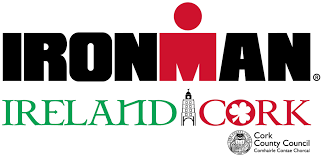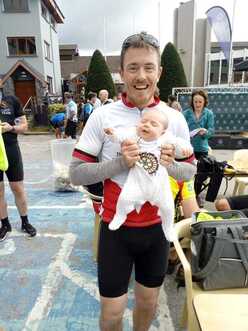|
Preparation for your mission starts now. The aim of this long-distance triathlete blog series is to raise awareness in this group of go-getters to what really matters, point out areas that are worth exploring and keep the enjoyment of the journey at the top of the list. I will be using results from a recent survey to help structure the first two blogs in the series, and then use my experience in physio, injury prevention, nutrition, bike fit and exercise physiology to steer the rest of the blog posts. It goes without saying, we have to believe with every muscle cell in our body that our IM Cork event will go ahead as planned on the weekend of the 14th August. That’s about the only reference to COVID-19 that I wish to make in the series, let’s see how far I get! The layout of the series will look like this:
Let’s get crackin’. The opening question of the survey had to be, have you ever walked the walk before? Or more appropriately, swam the swim, biked the bike and ran the run! Out of the 91 respondents, 38 of them were embarking on the Ironman or half ironman challenge for the first time. Bravo to you. I am number 39! This will be my first long distance triathlon and I am absolutely brimming with excitement about the task at hand. My previous endeavors lie in the adventure racing circles and mountain biking events with a few sprint triathlons in 2019. Can I add a little more here if I may, since my training and physiology will be analysed later in the blog series and knowing a bit about my sporting background will help with understanding the science. My training history over the past two and a half years has been one of work hard coz you don’t have loads of time to spare (new baby daughter in the mix back in 2018) and prior to Roisin joining us, I was focused on middle distance adventure racing and resistance training. I was more of a turbo engine than a diesel engine it would be fair to say. And it is also fair to say that diesel engines, as much as they are going out of fashion, fair out much better at ironman and half ironman distance events. More on this later! The next question in the survey was “What single piece of advice would you give someone signed up to Ironman Cork 2021” Now then! This really is the meaty bit of the opening blog, because there’s so much to pick at and dissect here. I decided to list the comments and stick a number beside it if it came up more than once. The List Trust, plan and listen to the body 1 Be consistent 3 Stick to your training plan 9 Train the mind as much as the body 2 Pace yourself 2 Visit The BikeFit Physio X plus 1!! Wing it 1 Get a coach 6 Wear socks for the run 1 Enjoy it 11 Have a plan 3 Proper equipment is essential 1 Patience 3 Start your programme early 3 Be careful regarding Nutrition 1 Nutrition and put in zone 2 hours in training 1 Mix up training, not focusing on your best discipline and include strength training 1 No.1 Rule, don’t get injured 1 Don’t underestimate the journey 1 Be flexible on a plan 1 Bike leg in Cork is the most important 1 Be consistent with training, no cramming 1 Train most weekends for a few months beforehand! 1 Develop nutrition plan 1 Don’t bluff it! 1 Don’t worry about speed, get base miles in 1 Slow training 1 Find a plan that works for you 1 Prepare well and use familiar clothing on the day 1 Get advice from experienced people 1 Take what you wish from the list people, it’s all there. Including a few sarcastic ones and an ironic combo of “be consistent with training and no cramming” next to “train most weekends for a few months beforehand!”. Would love to meet the athlete who stuck that one in there, reveal yourself?! Thank you to all the survey responders by the way. Filling out these things is a generous use of your time, so thank you. I have highlighted in bold the ones that stand out for me. We said in the intro that the aim of the blog series is to help you train appropriately and scientifically to allow you cross the finish line with style, but also to enjoy the process. And the people have spoken here too. “Enjoy it” was the most popular piece of advice and rightfully so. We should regularly check-in with ourselves, especially during the darker months of Jan, Feb and March, to recall the reason why we are putting in the time for training. We are bettering our fitness. We are improving our physiology to master the task at hand. We are building muscle to move us and protect us. I guess I’m saying, look beyond the scheduled 50min run that is in your diary for tomorrow and see it as an opportunity to further improve your current mental and physical state. This outlook should help muster a sense of internal pride and enjoyment in what you are doing. Just a thought! Trust, plan and listen to your body: There is a lot going on in this sentence. Long distance triathlon is not just a physical task, there’s a strong mental component required in order to perform the best you can. Trusting in your ability to carry out the training, consistently. Trust in your training plan. Brings in the tip to find a plan that works for you and trust it. Can I add here that your plan does not need to be massively detailed with meticulous attention to detail and training progression like something a personal coach would provide. It should however contain an overall objective for each month or two month period from now until the race in August. Since the objective will dictate the type and amount of training. For instance, my objective for Jan and Feb and into March is to continue to improve my aerobic base and metabolic efficiency, both at the low and high end of the intensity ladder. You’ll have to wait until the 2nd blog containing the podcast to get your head around that if you haven’t done so already! We will talk more about training load management in a later blog, but I would like to add at this point the importance of a recovery week. Typically every fourth week should contain less intensity and volume than the three weeks that precede it. Listening to your body is crucial. My physio brain is tuned in to the potential dangers that lie ahead in my training journey. In fact, I am currently listening to the ball of my right foot! In it’s own peculiar way, it’s telling me that I should give it a little TLC. We are holding daily meetings to feel around the matter and collectively, we make a decision based on the findings and take it from there. If you want to witness this meeting between me and my right foot, click here and if you are happening to be getting some achilles tendon issues or plantar fascia pain, then I would suggest you take a look at a video series I made to guide you through the rehab for those. Achilles tendinopathy : click here Plantar fascia pain: click here Another time to listen to your body is when you are too focused on hitting the numbers. If you’re following a plan and it is suddenly becoming very difficult, step back and listen. Perhaps you are not getting sufficient recovery, maybe sleep this week has not been up to your usual standard or you have a case of the sniffles. This is precisely when you should step down off the high horse and be flexible on your plan. Speaking of numbers, I am an advocate for certain metrics and firmly believe they help us, especially those backed by good research. One which I’ve decided to give a go and seems to be well documented is heart rate variability. The app I am using, which I have no problem recommending is “HRV4training” and so far it looks to be a worthwhile purchase. HRV is essentially the oscillations between the heart beats over time and is shown to be linked to our autonomic nervous system in order to facilitate the function of the heart and the cardiovascular system. In short, our HRV can tell us if we are stressed, both physiologically and psychologically. Over-training is stress on the body, it will appear as a lower HRV score and will put us at increased risk of injury. For instance, if you let the app measure your HRV at a consistent time, first thing every morning is a good idea, and it comes back as lower than normal. Then it would be wise to replace that tough training session that you may have scheduled for that day with an easier one. I see this app as a way of communicating with my heart as we march on with the POA for IM Cork! Patience and start your plan early go nicely together in my view. The simple reason for starting early is to allow ample time for you to get the slow training in the bank and for this zone 2 training to change your physiology for the better. By better, I mean adapt your physiology to be able to meet the demand of your ultimate goal of completing the long distance event. You will not do your body justice in an IM or 70.3 event by adopting the “go hard or go home” motto. I repeat, you will not fair out well if you refuse to include low intensity runs and cycles in your plan. These low intensity sessions have a massive influence on improving your fat burning engine’s efficiency and productivity. In science speak, low intensity sessions will build more mitochondria in the cells and grow more capillaries to deliver blood to the muscles. Energy used to move the body is made in the mitochondria and oxygen hitches a ride to the working muscles via the blood. This is your aerobic base people, do not underestimate its importance in assisting us in what we are all signed up to do this August. More on this next week. Lastly, I will cover both nutrition, more on zone 2 training and strength training in later blogs. Thanks for reading, and watching! Ciao for now, John Phelan Physio & nutritionist www.thebikefitphysio.com & www.lifefitphysio.ie
4 Comments
Willie Barry
31/1/2021 09:36:20
Thanks John. Great read. Keep it coming. Injury prone Willie.
Reply
Ann payne
2/2/2021 11:04:25
Nice john . Very good writing and got my interest immediately . Makes a lotta sense
Reply
6/1/2022 09:21:48
Hello, I Liked your blog so informative idea to share with us. Thanks once again and best of luck.
Reply
Leave a Reply. |
John
|
|
|




 RSS Feed
RSS Feed